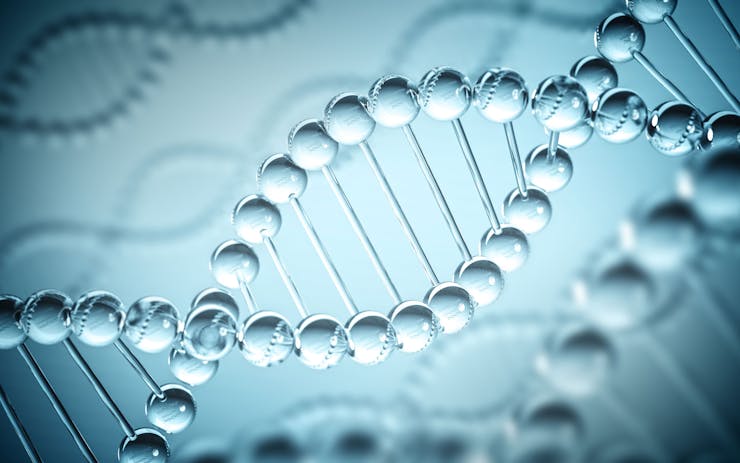One of the great mysteries surrounding cannabis has been solved. A team of scientists from the University of Toronto (U of T) has discovered how hemp and cannabis evolved from a single species—Cannabis sativa—but contain distinct chemical properties. Hemp contains little or no THC (tetrahydrocannabinol) but plenty of CBD (cannabidiol), while medical cannabis is rich in THC but has little or no CBD.Explore the World’s Largest Strain Database
Mapping Cannabis’ Code, Viral Duplications
Genome mapping by Tim Price and a U of T team pinpointed the difference between the two plants and their active ingredients.
By examining its chromosomes with supercomputers, his team found “related enzymes that make CBD and THC occur in the same chromosome.”
Scientifically, it’s a huge deal. Cannabis has a weird genome.
“Unlike most genes, which have a big section in the middle and selfish DNA,” he said, “cannabis does not have many genes, does not recombine very often, and we don’t see [the genes] segregating together.”
Just as Saint Bernards and Shih Tzus are incredibly different but still both dogs, Jon Page—founder and CEO of Anandia Labs, botany professor at the University of British Columbia and a collaborator in the study—said the two types of plant share 85% of the proteins in question. Hemp and medical cannabis’ genomes diverged about ten million years ago. The fact that they can and do recombine, although very rarely, indicates that they are the same species.
The study found that among cannabis’ ten chromosomes, chromosome number six holds the genes for the production of THC and CBD. In both hemp and cannabis plants, chromosome six is packed full of “retroelements”, “vast swaths of garbled DNA,” left behind by “viruses that colonized the genome millions of years ago.”
“Researchers expect the map will speed up breeding efforts to create new strains with desired medical properties as well as varieties that can be grown more sustainably…”
“Plant genomes can contain millions of retroelement copies,” said Harm van Bakel, a professor of Genetics and Genomic Sciences at New York City’s Icahn School of Medicine at Mount Sinai and a collaborator in the study. “This means that linking genes on chromosomes is analogous to assembling a huge puzzle where three-quarters of the pieces are nearly the same color. The combination of a genetic map and PacBio sequencing technology allowed us to increase the size of the puzzle pieces and find enough distinguishing features to facilitate the assembly process and pinpoint the synthase genes.”
Thank a Virus, Plus Human Selection for THC
You can thank a random virus, followed by human selection for cannabis’ medicinal effects from THC, like relaxation.
According to a U of T News, “the researchers believe that gene duplication of the ancestral synthase gene and expanding retroelements drove ancient cannabis to split into chemically distinct types. Humans subsequently selected for plants containing desirable chemistry such as high THC.”
Shop highly rated dispensaries near you
Showing you dispensaries nearThe study, however, can’t answer why the change occurred. “In biology, we’re really good at how,” Price said, “not so good at why.”
While it’s been widely reported in the media that the change was a result of how two different groups of plants fought off the viruses that attacked them millions of years ago and left their own DNA behind, Price points out that is only speculation.
“It could have happened,” he tells Leafly, “but we can’t be certain.”
Many people have hypothesized the active ingredients were developed to fight off bigger pests, like insects.
Similar to how caffeine occurs in about sixty different plants, and provides a pleasant energy boost for humans but is fatal to insects, Price said that CBD and THC acting as naturally occurring insecticides could be the case. He points out the active ingredients occur in locations that insects could easily access, but did not endorse the idea, noting that the psychoactive effects of THC would not have been an advantage in such a scenario because they have to be heated to be released.
Of course, selective breeding by humans in recent years has increased the yields of THC and CBD in their respective plant types, and, now with the genome map providing more precise information on the species’ genetic makeup, “researchers expect the map will speed up breeding efforts to create new strains with desired medical properties as well as varieties that can be grown more sustainably, or with increased resistance to diseases and pests.”





